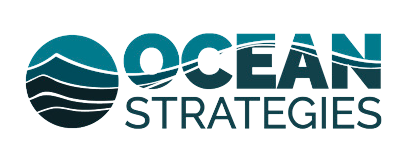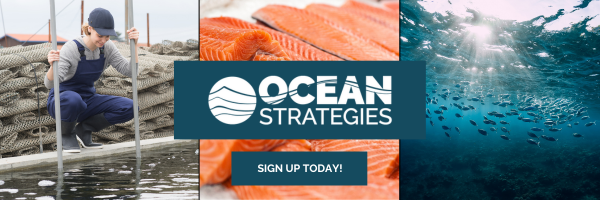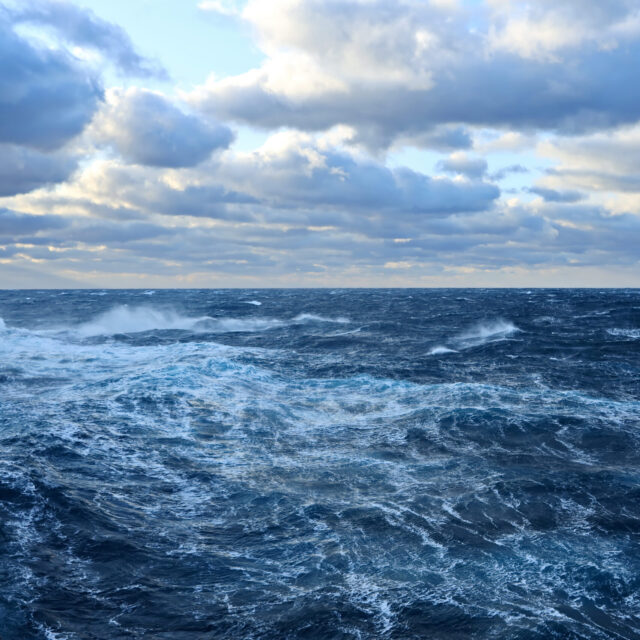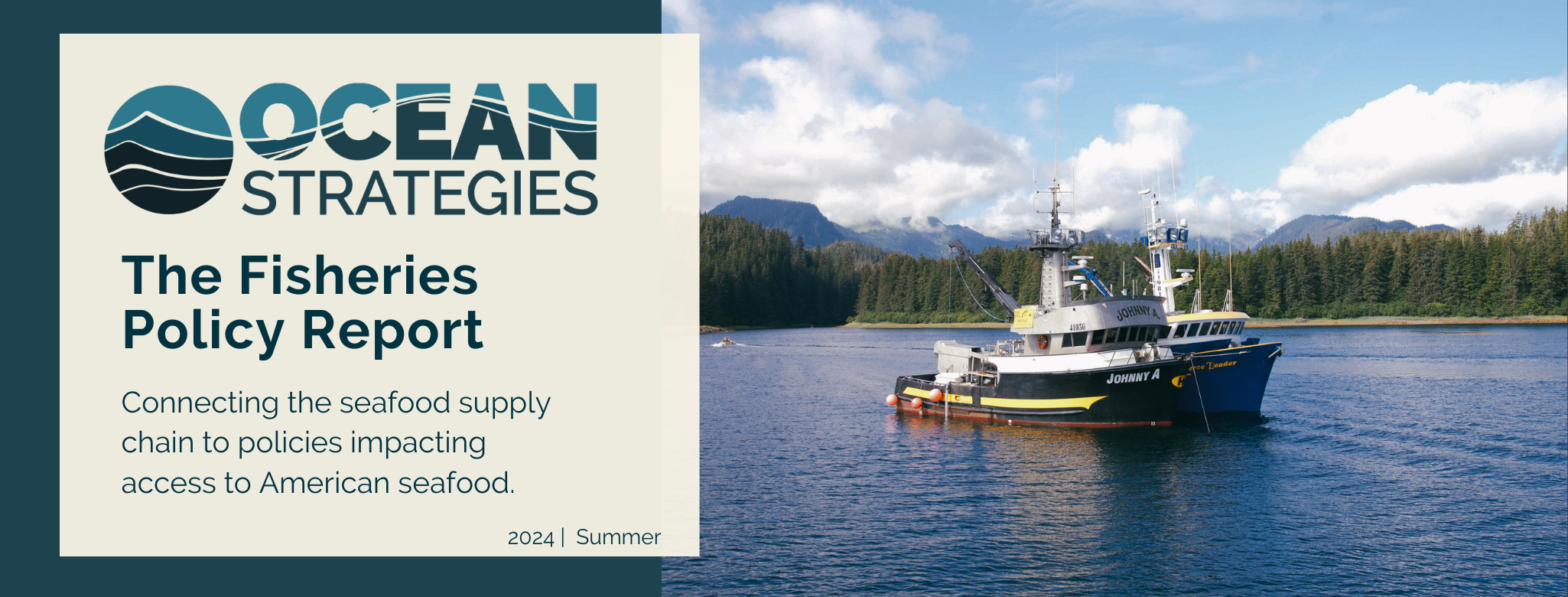
Ocean Strategies is a public affairs firm specializing in seafood, fisheries and marine resources.
This report provides policy and industry updates for those who rely on access to sustainable U.S. seafood. Sign up here.
Included In The Report
-
- Catch of the Day: Draft MSA Reauthorization Released
- Federal Outlook
- Staff Picks: What We’re Taking In
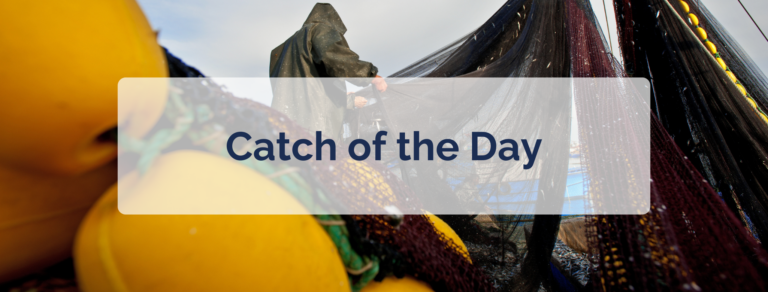
Catch of the Day: Draft MSA Reauthorization Released
Congress restarts conversation around updates to leading federal fisheries law
At the tail end of World Ocean Month, a bipartisan coalition of representatives led by Rep. Jared Huffman (D-Calif.) again introduced an update and reauthorization of the Magnuson-Stevens Fishery Conservation and Management Act (MSA), America’s primary fisheries law.
The Sustaining America’s Fisheries for the Future Act is co-sponsored by James Moylan (R-Guam), Ed Case (D-HI), Mary Peltola (D-AK) and Huffman, who is the ranking member of the Natural Resources Subcommittee on Water, Wildlife, and Fisheries.
The proposed legislation elevates the needs of fishing communities and placed-based fishing with emphasis on new tools for addressing species shifts, a working waterfront grant program and subsistence fishing.
It also brings back a proposal to add two seats representing Native Alaskan Tribes to the North Pacific Fishery Management Council.
 “The Aleut Community of St. Paul Island supports this bill because it benefits fishing-dependent communities like St.Paul,” John Melovidov, president of the Aleut Community of St. Paul Island, Alaska. “The MSA is in dire need of updates; this reauthorization bill is responsive to the longstanding concerns we have voiced to federal and state fishery managers as frontline communities experiencing dramatic climate change. There are many positive attributed to this bill, but we are especially encouraged by the additional of two voting seats for our Alaska Native Tribes on the North Pacific Fishery Management Council, giving us a much-needed voice in the decision-making process where we have historically been minimized and excluded.”
“The Aleut Community of St. Paul Island supports this bill because it benefits fishing-dependent communities like St.Paul,” John Melovidov, president of the Aleut Community of St. Paul Island, Alaska. “The MSA is in dire need of updates; this reauthorization bill is responsive to the longstanding concerns we have voiced to federal and state fishery managers as frontline communities experiencing dramatic climate change. There are many positive attributed to this bill, but we are especially encouraged by the additional of two voting seats for our Alaska Native Tribes on the North Pacific Fishery Management Council, giving us a much-needed voice in the decision-making process where we have historically been minimized and excluded.”
The last time Congress attempted to reauthorize the MSA was in 2022. That reauthorization attempt was also sponsored by Democratic Reps. Huffman and Case, following a two-year series of listening sessions across the country to engage feedback from fishing industry stakeholders. It was criticized by Republicans and some fishing and supply chain groups as a partisan bill that stood little chance of passing the Republican-led Senate.
Two years later, some of the same polarizing language remains in the bill — specifically bycatch reduction, essential fish habitat restoration and forage fish protections. However, its support for working waterfront resilience remains a bipartisan issue, as seen in the myriad working waterfront bills introduced in the last year by Sens. Susan Collins (R-Maine), Lisa Murkowski (R-Alaska), and Jack Reed (D-R.I.); and Reps. Chellie Pingree (D-Maine) and Rob Wittman (R-Va.).
 “Nearly four years ago, I participated in Congressman Huffman’s New England MSA roundtable to elevate the issues of conservation, climate, accountability, and modernization in our fishery management system,” said Ben Martens, executive director of the Maine Coast Fishermen’s Association. “Today, as Maine rebuilds from historic storms and contends with challenging data shortfalls, these issues are more important than ever. Mr. Huffman’s MSA reauthorization bill, rooted in those national stakeholder conversations and updated to reflect the lessons of COVID, contains multiple steps in the right direction for federally permitted commercial fishermen of Maine and the nation.”
“Nearly four years ago, I participated in Congressman Huffman’s New England MSA roundtable to elevate the issues of conservation, climate, accountability, and modernization in our fishery management system,” said Ben Martens, executive director of the Maine Coast Fishermen’s Association. “Today, as Maine rebuilds from historic storms and contends with challenging data shortfalls, these issues are more important than ever. Mr. Huffman’s MSA reauthorization bill, rooted in those national stakeholder conversations and updated to reflect the lessons of COVID, contains multiple steps in the right direction for federally permitted commercial fishermen of Maine and the nation.”
The last time the act was reauthorized was in 2006. The current proposal includes improving data collection, reducing risks of stocks crashes, reducing bycatch and increasing Indigenous representation; it also dials in on climate resilience. The quickly changing needs and conditions of the nation’s waterfront communities has been a consistent thread in recent efforts to reauthorize the MSA.
“Things have changed,” said Huffman in 2022. “We were not thinking about climate change the last time we reauthorized this law. We hear about shifting fish stocks, changing habitats, changing ocean conditions and habitat impacts that are putting stresses on fish populations. All of it points to a critical need to have climate ready fisheries.”
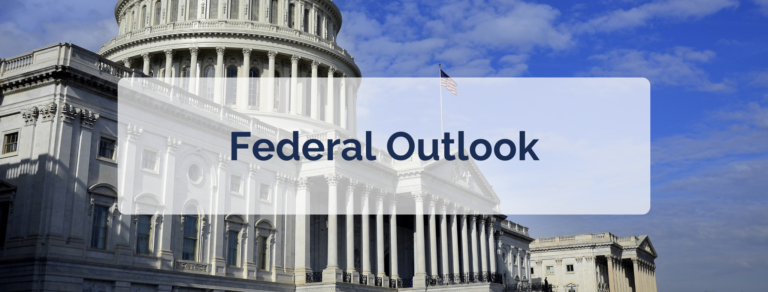
Federal Outlook
Policy headlines have been particularly fishy the last few weeks. Here’s the federal policies we’re watching, and where they’re landing with seafood stakeholders.
Seafood Inclusions in the Farm Bill
Seafood harvesters and processors across the U.S. are applauding the long-awaited news that foundational seafood considerations have made their way into a draft Farm Bill framework. Fishing-dependent businesses have long pushed for these steps as a means to bring seafood more fully into the pillar policies of the American food system, including nutrition, food security and resilience for food-producing communities and businesses.
This is particularly timely for seafood, as U.S. harvesters and processors grapple with market instability and coastal infrastructure challenges. Several of the inclusions signal important support in terms of resources and agency collaborations that help to shore up fishing community and business resilience. While the USDA has had extensive programs directly supporting or including aquaculture for years, this latest step represents critical inroads for wild capture fisheries, and additional support for aquaculturists.
Ranking Member John Boozman (R-LA) of the Senate Agriculture, Nutrition and Forestry was one of multiple members that recognized the need and value of bringing seafood into the fold. His office announced the news earlier this month.
Seafood Inclusions: These apply to both wild and farmed seafood
- Establish a seafood liaison in the USDA Office of the Chief Economist;
- Require Country of Origin labeling for certain products like crab and salmon;
- Direct the USDA to conduct a feasibility study on expanding seafood processing in coastal communities;
- Incorporate Buy American language into nutrition program purchases, and impose a 5 percent cap on non-domestic purchases for all food categories, including seafood; and
- Allow fishing industry businesses access to low-cost loans through Agricultural Credit programs.
It’s not yet clear whether Congress will get the Farm Bill across the finish line this session; however, the legwork done by the seafood industry to educate Congressional members and elevate the dialogue has generated momentum that stakeholders can build on for years to come.
The Chevron Decision: How a recent Supreme Court ruling could affect U.S. fisheries
In a sweeping decision last month, the U.S. Supreme Court overturned the long-standing “Chevron Deference,” a ruling that said courts should generally defer to the expertise of federal agencies in the interpretation of law. That includes the National Marine Fisheries Service (NMFS) under the Department of Commerce, which manages the nation’s federal fisheries, and was a central topic of the case.
The legal challenge — Loper Bright vs. the Department of Commerce — came from a group of fishermen disputing the agency’s right to charge them fees for at-sea observers, essentially calling out the deference to agency action as government overreach. The court agreed in a 6-3 vote, but they ruled on the validity of deference only, remanding the observer question back to lower courts.
The Chevron ruling and its removal impact industry and agency operations across all facets of government, but it will be future rule-making and legal challenges that reveal actual long-term effects. Given an increased ability to challenge agency interpretation, the long-term outcome for fisheries could very well be a pay-to-play approach to management. In other words, a more extreme version of what we already have.
Right now the only thing we know for sure is that conflicts and outcomes will vary significantly by region, and only the largest cases are likely to rise to the top. So the question of the day seems to be, who has the money to litigate regulation, and what are their priorities?
In fisheries, we can expect more lawsuits around management decisions both old and new. We can also likely expect slower processes at the fishery management council level, both as a result of litigation and as an attempt to avoid it. Greater specificity in legislation may help to address those patterns in the long-term, but getting additional precision out of an increasingly entrenched Congress is a tall order. More broadly, loss of Chevron deference could make the agency even more hesitant to develop new and adaptive management responses to modern fishery challenges, like climate change, and the equitable distribution/redistribution of resources.
Some in the seafood industry are calling the Loper-Bright decision a win, and the case does look like a victory for fishermen in the short-term. Particularly for those who’ve struggled with increasingly expensive and restrictive management, or who have tried to push back against competing ocean and waterfront development led by other federal agencies, such as the Bureau of Ocean Energy Management.
However, some of the industry’s harshest critics are also celebrating. The types of environmental NGOs that are targeting domestic fisheries can and likely will use this decision to supercharge fundraising in the hopes of suing their way to management decisions that satisfy their agendas. In the first and ninth circuits, they will have a decent chance at making this a reality. And disagreement between industry players could increasingly follow suit, settling management disagreements in court rather than the science-driven processes of the fishery management councils and agency.
The fishing groups with the funds to pay for full-time lobbyists, lawyers and marketing programs will have a better chance of pushing their priorities through the court. This could result in even more competition and less collaboration between small- and large-scale sectors, whose advocacy resources are vastly different.
You might say: But the Supreme Court cares about fishing, or they wouldn’t have found in favor of these fishermen, right? But remember that the majority did not actually rule on fisheries aspects of the Loper-Bright case. They remanded that decision back to the lower courts after using the case to fulfill a long-time activist goal to strike down the Chevron precedent.
We’ll be on the lookout for Chevron’s downstream impacts in seafood spaces, what it means for management process, precedent and ocean livelihoods. More to come.
Bottom Trawl Clarity Act
Alaska Representative Mary Peltola introduced several pieces of fisheries legislation in June, including a bill that tasks the nation’s fisheries management councils with updating regulations around ocean floor contact with trawl nets. The primary components of the legislation are to 1) define what bottom contact is; 2) determine which areas allow bottom trawling; and 3) prohibit bottom trawling in coral/sponge ecosystems and savings areas.
The legislation is a response to an increasing groundswell of public concern around the long-term impacts of trawl gear interactions with sensitive habitats, largely based on concerns around midwater, or pelagic, trawl gear. Alaska’s pelagic trawl pollock fishery is the largest food fishery on the planet, harvesting billions of pounds of Alaska pollock every year.
Supporters within the fishing industry, coastal communities and Alaska Native tribal organizations say the bill puts a long overdue spotlight on the amount of time that midwater/pelagic trawls spend in contact with the seafloor, though they are intended to operate well off of it. They’ve defended the bill’s directive to add common sense gear definitions to America’s largest fishery, and ensure that areas already closed to bottom trawling aren’t being damaged by midwater/pelagic gear.
Other industry voices have come out strongly opposed, calling the legislation an overstep of Congressional action into fisheries management processes and an unnecessary risk to the seafood industry writ large. The bill is not expected to move beyond its current stage, though it continues to spark dialogue nationwide.
FISH Act Strives to Identify and Address Obstacles to U.S. Seafood Supply Chain Success
The latest fisheries policy issue out of Alaska Representative Mary Peltola’s office proposes some targeted strategies for addressing U.S. seafood market competitiveness and U.S. fisheries resilience.
The FISH Act — Fisheries Improvement and Seafood Health Act — takes these targeted approaches to strengthening U.S. seafood markets.
- Asks the GAO to assess U.S. seafood competitiveness in global seafood markets, and the potential for federal programs to support production.
- Creates a Fisheries and Ecological Resilience program to support data collection and cross-agency collaboration around fisheries management tools and processes.
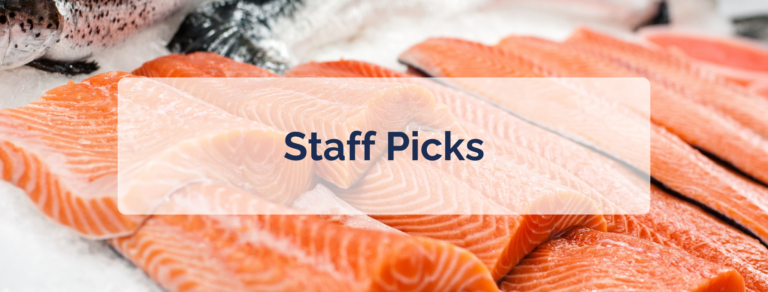
What We’re Taking In
Now Streaming
Hope in the Water
We are thrilled to share that PBS began airing HOPE IN THE WATER on June 19. Ocean Strategies Principal Brett Veerhusen interviewed Jennifer Bushman, co-founder of Fed by Blue, the non-profit organization that created this groundbreaking, three-part docuseries. 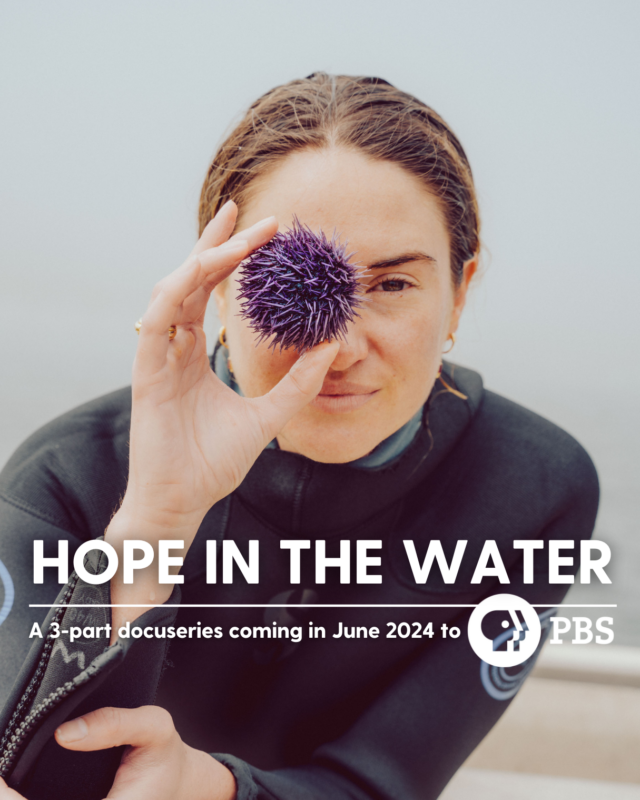
They discuss what inspired this project, holding onto hope while taking part in a global movement toward abundant oceans and sustainable food systems. Enjoy the full interview on our website.
The series highlights celebrated environmentalists Shailene Woodley, Baratunde Thurston, Martha Stewart, and Chef José Andrés in discovering creative solutions and breakthrough blue food technologies around the globe that could not only feed us but help save our threatened seas and fresh waterways.
In hearing the stories of amazing innovators, fishermen and harvesters who are working toward a sustainable future for the planet, viewers will find inspiration and hope in the life-giving resource that covers 71% of our planet’s surface.
Reading
Opinion: Peltola pulls for Alaska fishermen
Longtime fishing community advocate Linda Behnken headlines this Anchorage Daily News opinion column, describing why she’s encouraged by Rep. Mary Peltola’s recent fisheries management legislation. Linda is a commercial fisherman from Sitka, Alaska, and the Executive Director of the Alaska Longline Fishermen’s Association.
Close-Up on Closures: Part II
Ocean Strategies’ Hannah Heimbuch commercial fishes for salmon in a remote area of Kodiak, Alaska. Close-Up on Closures: Part I detailed the early impacts of her fleet losing their only local seafood processor, a challenge fishing communities across the U.S. are increasingly grappling with as seafood markets struggle. This second installment shares the solutions this small-boat fleet has found to make a 2024 salmon season happen, and the community support that makes it possible.
All Eyes on Alaska: Nathaniel Herz’s Northern Journal
We’re always looking for quality coverage of our domestic fisheries and seafood industry. This feature on the uneasy start to Alaska’s summer salmon season is just a taste of what Herz is offering as an independent journalist based in Anchorage. Read and support here.
Recipe
Edible Northeast Florida’s Redfish on the Half Shell
Full transparency: we can’t help but feel that the world, and certainly the legislative outlook, is overwhelming at times. So place your worries on the backburner and enjoy this tasty recipe about “half-shell grilling” – skin, scales and all.
Here is a list of links to our most recent policy reports. You are always able to find them on our Ocean Pulse Blog. If you’d like to receive them directly, just sign up here.
